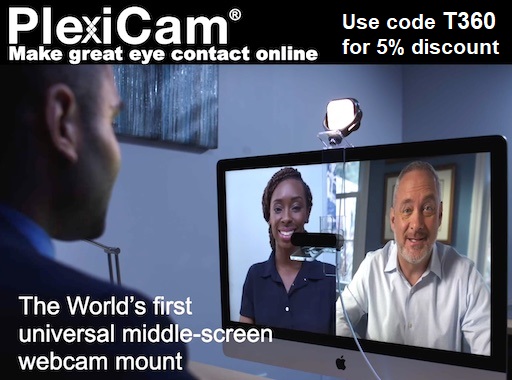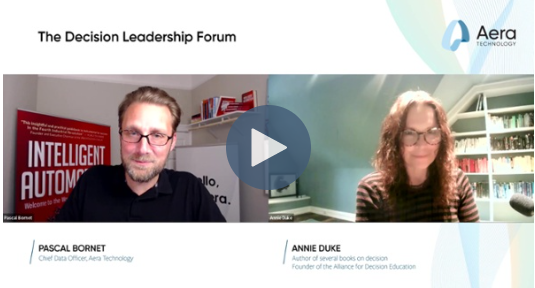

Head of Community Recognition & Development at Thinkers360.
Thinkers360 is the world’s premier platform for thought leaders and influencers to share opportunities, promote and advance their expertise. Organizations and agencies use our tools for finding and working with the world’s top thought leaders as well as showcasing their own corporate executives, thought leaders and content to drive brand eminence and revenue growth.
Connect with the world's premier influencers and thought leaders with over 100M followers combined. Contact us for details at info@thinkers360.com.
Are you a thought leader looking to showcase your profile and portfolio - as an academic, advisor, analyst, author, consultant, influencer, speaker - and participate in the gig economy and our global leaderboards? Sign-up here: https://www.thinkers360.com/tl/users/registration
Available For: Speaking
Travels From: Cartagena, Colombia
Speaking Topics: ...
| Yessenia Sembergman | Points |
|---|---|
| Academic | 0 |
| Author | 20 |
| Influencer | 6 |
| Speaker | 0 |
| Entrepreneur | 0 |
| Total | 26 |
Points based upon Thinkers360 patent-pending algorithm.
 Special Report: 150 Women B2B Thought Leaders You Should Follow in 2021
Special Report: 150 Women B2B Thought Leaders You Should Follow in 2021
Tags: Leadership
 Top 50 Global Thought Leaders and Influencers on Digital Disruption (October 2019)
Top 50 Global Thought Leaders and Influencers on Digital Disruption (October 2019)
Tags: Digital Disruption
 The future of work – Insights from Thinkers360 global thought leaders and influencers (Part 1)
The future of work – Insights from Thinkers360 global thought leaders and influencers (Part 1)
Tags: Future of Work
 Top 20 Global Thought Leaders and Influencers on Future of Work (August 2019)
Top 20 Global Thought Leaders and Influencers on Future of Work (August 2019)
Tags: Future of Work
 Thought Leader Interview with Ton Dobbe, Chief Inspiration Officer, Value Inspiration
Thought Leader Interview with Ton Dobbe, Chief Inspiration Officer, Value Inspiration
Tags: AI, Marketing
 Thought Leader Q&A with Rashim Mogha, Head of Product, AAU at Automation Anywhere and Founder, eWOW
Thought Leader Q&A with Rashim Mogha, Head of Product, AAU at Automation Anywhere and Founder, eWOW
Tags: AI, Leadership
 Top 20 Global Thought Leaders on FinTech (March 2019)
Top 20 Global Thought Leaders on FinTech (March 2019)
Tags: FinTech
 Thought Leader Q and A with Phil La Duke, Principle Consultant at Environmental Resources Management (ERM)
Thought Leader Q and A with Phil La Duke, Principle Consultant at Environmental Resources Management (ERM)
Tags: Health and Safety, Future of Work
 Top 20 Global Thought Leaders on Internet of Things
Top 20 Global Thought Leaders on Internet of Things
Tags: IoT
 Thought Leader Q and A with Kelly Barner, Managing Director, Buyers Meeting Point LLC
Thought Leader Q and A with Kelly Barner, Managing Director, Buyers Meeting Point LLC
Tags: Procurement
 Top 20 Global Thought Leaders on Culture
Top 20 Global Thought Leaders on Culture
Tags: Culture
 Top 20 Global Thought Leaders on Big Data
Top 20 Global Thought Leaders on Big Data
Tags: Big Data
 Thinkers360: Connecting Global Brands with the World's Premier Thought Leaders and Authentic Influencers
Thinkers360: Connecting Global Brands with the World's Premier Thought Leaders and Authentic Influencers
Tags: Digital Disruption, Marketing, Social
Associate, Community Recognition & Development of Thinkers360
August 10, 2023, Estefania Vergara Sembergman worked with Yessenia Sembergman at the same company
Testing
Date : September 21, 2020
Date : October 12, 2023
Date : August 03, 2020
Date : September 21, 2020
Date : July 31, 2020
Date : July 16, 2020
Date : July 15, 2020
Date : August 03, 2020
Date : July 31, 2020
Date : September 21, 2020
Date : September 21, 2020
Date : September 25, 2020
Date : September 23, 2020
Date : October 20, 2021
Date : October 20, 2021
Date : October 19, 2021
Date : October 13, 2021
Date : September 21, 2020
Date : July 16, 2020
Date : July 16, 2020
Date : July 16, 2020
 Thinkers360 is Live on Product Hunt
Thinkers360 is Live on Product Hunt
Thinkers360 is live on Product Hunt! Like what we do? Leave us a review and help us spread the word!
Tags: Marketing, Public Relations, Personal Branding
 From Contacts to Clients: Leveraging LinkedIn and CRM for Business Success
From Contacts to Clients: Leveraging LinkedIn and CRM for Business Success
Sponsored By LeadDelta
Year after year LinkedIn continues to have a pivotal role in the world of modern business and connecting people within. Developers of this vast social network always tend to keep a steady eye on the demands of an ever-changing business environment.
One such demand was CRM integration. If your goal was to seek clients using this network, you had to keep track of all the contacts, messages, relationship nuances, leads, etc.
This requirement led LinkedIn to develop a set of CRM tools that have become essential for professionals looking to convert contacts into clients.
Suddenly:
..became a lot easier! And here is how it’s done.
LinkedIn started as a job-seeking platform. Even today this is still synonymous with this network. Yet, it is much, much more. When used the right way in the right environment, LinkedIn can become a powerful platform for building and strengthening professional relationships.
Naturally, a contacts list stacked with potential clients doesn’t just fall from the sky.
As is with almost every social network, first you need to round up a compelling profile. It should reflect your expertise, the visuals should be done professionally, basically - it should build trust with others when contacting them.
Crafting such a robust profile is the first step in attracting potential clients.
The second one is the message you're sending. And here, we’re not referring to the actual message when contacting others, but the totality of creating and sharing valuable and practical content via your profile, engaging with other people’s posts. Generally speaking - marking your online presence.
Finally, choose well where you are making your presence felt. Search for groups or profiles with plenty of engagement and coverage and strategically expand your network to stay top-of-mind with potential clients.
Imagine a well-organized library where each book represents a customer. This library not only stores information about each customer’s past interactions, preferences, and needs but also suggests the best way to engage with them next. This is what CRM is.
What it does within the LinkedIn setup is:
If you have five contacts, you don’t need CRM software. But, what if that number is five hundred? Or five thousand? Most likely you will need a machine to do its lion’s share of work.
Tracking an interaction means being fully aware of every single exchange you had with a contact. Be it a message, comment, or a profile view - every bit of contact activity is stored inside the CRM system. To own such a timeline of client interaction is a great advantage in any business.
To strike a (business) chord with someone often means to engage in communication that is consistent and timely. Whether it’s a schedule reminder for a sales rep or a follow-up email, it’s a good thing to have a 24/7 awake automated trigger integrated with your CRM system.
LinkedIn offers a variety of information, such as job titles, industry, recent activity, or mutual connections. All this could and should be used to tailor their outreach. For instance, if a potential client recently shared a post about a specific industry trend, you can reference that post in their next outreach.
CRM software uses this data to create highly personalized messages, making interactions more relevant and meaningful.
Consider Dunbar's number. It refers to a human cognitive limit in the number of people with whom you can maintain meaningful social relationships. This British anthropologist claims that we can track up to 150 relationships.
Everything beyond that number is too much for our brains. Others suggest even smaller numbers. Enter LinkedIn and CRM.
Whether it’s an integrated LinkedIn CRM or an outside CRM software, once you run it, you are in for a ride! Certain LinkedIn’s limitations suggest that sometimes it is a good idea to reach out for a different software solution. Such mundane action is dealing with how to remove LinkedIn connections. LinkedIn makes it tedious to do it in bulk, for example.
Once you connect the two - the syncing starts. Your and others LinkedIn activities are monitored to create a seamless flow of information and a more holistic approach to client management.
SAP is a German software giant specializing in managing business operations. SAP has recognized the power of LinkedIn and social selling, so they started using LinkedIn Sales Navigator.
The goal was to locate clients, engage with them over quality content, establish relationships, and turn them into customers.
The magnitude of this project demanded some sort of CRM software. They developed their own and integrated it with LinkedIn. This integration ensures that all communications and interactions are logged, enabling more effective follow-up and nurturing.
The outcome was an easy guess: SAP has seen a measurable impact on its sales pipeline due to this LinkedIn-CRM combination. By providing relevant content and personalized outreach, SAP has been able to increase its lead conversion rate and reduce the sales cycle.
The way SAP (or any other business, big or small) was able to determine the efficiency of such an approach to social selling was to put a number next to the following metrics:
What CRM integration does is it provides you with real-time insight into communication tactics. Monitoring those three metrics above gives you a regular and steady flow of performance analysis information. You can use this information to tweak certain strategies on the spot.
The future of LinkedIn and CRM in business development is bright. With recent breakthroughs in the field of artificial intelligence, both LinkedIn and its integrable CRM software solutions continue to evolve with new features like:
Based on the premise that human behavior in certain business environments is somewhat predictable, we will probably witness an ever more automatization of the process.
We are perhaps not far from a point where using social networks such as LinkedIn along with some fine CRM solutions will mean the difference between success and failure, regardless of what we are selling.
Pay close attention and you just might succeed in bolstering transformation from contacts to clients.
Tags: CRM, Marketing, Sales
 Overcoming B2B Logistics Challenges: Strategies for Success
Overcoming B2B Logistics Challenges: Strategies for Success
Sponsored By Migway
Can you imagine a smooth supply chain where the products arrive exactly when needed, and disruptions don't exist? With effective B2B logistics, this is close to becoming a reality.
Yes, things can get quite hectic in the supply chain. Every disruption and missed deadline can result in financial losses. Addressing such challenges can help enhance efficiency, maintain cost control, and enhance customer satisfaction. Logistics managers should understand the common challenges and perfect their strategies to combat them.
A vast network that consists of suppliers, distributors, and manufacturers makes management more complex. You need to manage every party involved to avoid holds. This is when logistic managers understand the importance of implementing supply chain management software. With the help of AI and machine learning, the demand can be predicted. In fact, AI can easily predict patterns and data that humans can easily oversee. Therefore, managers can efficiently direct the resources with the help of technology.
B2B transactions involve time-sensitive deliveries. Even the minor delays and disruptions can impact the production processes and lead to financial loss. The common strategies to solve this problem are third party logistics providers, route optimization algorithms and buffer stock.
Route optimization relies on advanced technology to find the most efficient route that minimizes travel time. It takes weather and traffic congestions in consideration to minimize holds.
Maintaining a buffer stock is another solution to this challenge. It includes storing a small buffer inventory to deal with higher demand in case of disruptions. This keeps the production process moving forward and prevents delays. This results in higher customer satisfaction.
Inefficiencies in the supply chain, warehousing, and transportation will increase the overall logistics costs. This doesn't only affect the profit, but makes it difficult for companies to establish competitive pricing. Technology is here to help companies overcome the hurdle; process automation, inventory management and route optimization can help.
Logistic management systems can deal with the different steps of the process. From order processing to tracking, they help automate many processes. This eliminates the possibility of error due to manual work and decreases the costs.
When companies want to reduce their costs they can work with a trusted 3PL partner. The logistics partner helps decrease the transportation and warehousing costs. They have developed a strategy that allows them to consolidate the shipments and achieve the best transportation prices. Naturally, they work with large volumes of shipments so logistics companies will have greater power when negotiating pricing. For you, this means lower shipping costs while maintaining quality of service.
Understanding the local and international regulations is very challenging for companies. Failing to do so can result in fines and delays, resulting in significant financial losses.
The companies need to ensure regulatory compliance across different regions. They should stay informed about the changes but can also rely on technology to do so. Compliance management software is one of the tools that can help companies ensure compliance with their logistics activities. Keeping up to date with the latest regulations helps avoid fines and delays that happen due to non-compliance. The systems also take care of the documentation process with the power of automation. With this, logistics teams will have the administrative tasks off their shoulders. Another crucial step to avoiding compliance issues is working with customs, brokers, and consultants. Customs can help you navigate the hefty process and ensure smooth cross-border transactions. They can familiarize you with the local regulations, help with the documentation, speed up the customs clearance, and prevent delays disrupting the supply chain.
Tags: Supply Chain
 Why Personalization Matters in B2B Customer Service
Why Personalization Matters in B2B Customer Service
Sponsored By Zendesk
Every industry has countless B2B companies that seem to offer similar products and services. It's arguably difficult to stand out from the competition and grow a loyal customer base. However, you can compete favorably and achieve your business goals with the help of B2B personalization.
Personalization simply refers to the customization of your offers, marketing, and customer service to fit the needs of each customer. It ensures that you understand what your customers want and need. Then, you'll come up with strategies on how you can meet such expectations quickly.
In this article, we'll discuss personalization in B2B customer service and how you can implement it.
Let's explore some reasons why you need to personalize every form of communication with B2B customers.
Many customers who purchase B2B products expect fully or mostly personalized content when interacting with a company. They want to see personalization along every step e.g. when they discover the company, when they buy a product or service, when using the product, when they ask for help, and when they engage with the company.
You can increase customer engagement by personalizing interactions before, during, and after a purchase. It means that you'd recommend best-suited products, communicate via their preferred channels, and ensure that your product or service helps to solve their business problem. To retain your customers, you need to personalize every touchpoint.
The best way to guarantee success in your marketing is by crafting personalized content and advertising materials. You need to understand your customers’ needs, know how to address their pain points, and come up with good offers. About 97% of marketers use personalization to deliver better customer experiences and generate higher ROI.
It's not enough to provide an excellent product or service in a B2B company. You have to connect with all your customers and offer proactive support. This may include using check-in emails, direct messages, or phone calls to determine their satisfaction rate. You need to make them feel appreciated and look for ways to serve them better.
According to the stats, 56% of B2B buyers expect offers to be personalized. This means that you can convert leads and prospects into customers through personalization. You can also upsell and cross-sell relevant products to existing customers. The more satisfied customers are, the more they would recommend your brand to other businesses.
Personalization involves learning who your customers are, what problems they have, and the best way to help them.
Below are steps on how to offer B2B personalization:
The first step is to collect enough information about your target audience e.g. company information, demographics, purchase behaviors, etc. This can be through your own customer data, market research and competitor research.
After collecting valuable data, you can create customer segments and unique buyer personas. This can help you determine prospects who have certain job positions, needs, pain points, goals, behaviors, expectations, etc.
Customer service apps allow you to track, manage and respond to customer requests promptly. It also uses AI and data analytics to analyze customer interactions. You can use these insights to create better communication and develop more relevant marketing campaigns.
It's a good idea to focus your resources on high-value accounts. After creating an ideal buyer profile, you'll segment customers, identify those high-value customers, and create personalized communications for them.
You should note that B2B sales requires approval from multiple decision-makers. (You're not dealing with a single person). So you need to target a team of roleplayers such as the buyer, billings department, senior leadership, etc.
From marketing to customer service, you can create a tailored and more fulfilling customer experience. Here are some notable examples of B2B personalization.
When sending emails, you should use the buyer persona to add relevant information. You need to mention their first name, address any concerns, speak to the customer, and include any personal information where necessary.
Rather than reach out to customer service every time, B2B customers can use a self-service portal to perform actions. For example, they can place orders, pay bills, request support, update information, track past interactions, etc).
B2B websites should have personalized copy and content. You need to create offers for different personas, accounts, segments, leads, etc. Paid advertising and landing pages also need to target and match every customer segment.
It's advisable to assign specific customer service agents to your customers. This allows them to develop a relationship with one or two individuals in your support team. Some customers prefer dedicated support rather than speaking to a different agent every time they need assistance.
B2B customers are more likely to patronize a brand that offers personalized marketing and customer service. To create customized experiences, you need to collect data on your customers and use it to speak to their unique needs and interests. This could be in the form of targeted ads, personalized content, relevant recommendations etc.
Personalizing the customer experience isn't just a "must-do" It's a crucial strategy in B2B customer service interactions that can significantly enhance customer satisfaction, engagement and loyalty. By tailoring interactions to meet the specific needs and preferences of your target customer, businesses can build better brands which ultimately lead to more sales and an increase in revenue. Embracing these practices can set your business apart in a competitive market and foster long-term success.
Tags: Customer Experience
 The Year’s Most Popular Articles from Thinkers360 Thought Leaders
The Year’s Most Popular Articles from Thinkers360 Thought Leaders
We’ve searched the Thinkers360 Member Blog to pick out the year’s most popular articles on business, technology and sustainability from Thinkers360 thought leaders. Here’s our picks with direct links to the articles as well as to the author’s thought leadership profiles and portfolios on Thinkers360!
https://www.thinkers360.com/the-years-most-popular-articles-from-thinkers360-thought-leaders-2/
Tags: Innovation, Leadership, Management
 Announcing the Thinkers360 2022 B2B Thought Leadership Outlook Survey
Announcing the Thinkers360 2022 B2B Thought Leadership Outlook Survey
In association with the British Computer Society
Thinkers360 is conducting our 2nd annual industry research into the current and future state of B2B thought leadership working with our opt-in B2B thought leader and influencer community with over 100M followers on social media combined.
If you are a consumer and/or producer of thought leadership content, we invite you to participate in our survey and receive a free copy of the survey results. You will also be eligible to enter our drawing for one of three free 1-Year Pro Plan Memberships to Thinkers360 to further amplify your personal brand.
Upon survey completion, we will send a complimentary copy of the initial survey results to all participants and more extensive results and analysis will be made available to Thinkers360 members at the Pro Plan level and above.
We encourage all survey participants to share this survey invitation with fellow thought leaders and influencers as well as other consumers or producers of B2B thought leadership content to help us reach all those who have an interest in the current state of B2B thought leadership and it’s outlook for 2022!
###
Tags: Innovation, Marketing, Business Strategy
 5 Best Practices for Finding and Working with Authentic B2B Influencers and Thought Leaders
5 Best Practices for Finding and Working with Authentic B2B Influencers and Thought Leaders
Tags: Social, Leadership, Marketing
 How to find authentic B2B influencers and thought leaders
How to find authentic B2B influencers and thought leaders
In identifying and working with authentic influencers in their niche, organizations need tools and techniques to help them understand not only who the authentic experts are, but the kind of hats they wear as a thought leader – i.e. are they primarily an academic, author, influencer or speaker, or perhaps a unique combination of several of the above? Today’s marketplaces and platforms too often serve up one type of expert – i.e. an author, influencer or speaker – but don’t provide the means to find thought leaders who may be powerful combinations of the above. This can be a serious issue for brands, because what if you need an influencer who’s also a respected author and thought leader on specific niche topics, or a speaker who’s also great at facilitating workshops? To find out more about Thinkers360's unique approach, please see our original post at How to find authentic influencers and thought leaders or contact us via our Enterprise page and we’d be delighted to speak with you!It's no wonder that 61% of marketers have difficulty finding the right influencers.
Tags: Social, Marketing
 Find and fill Board Member and Advisory Board Positions on Thinkers360
Find and fill Board Member and Advisory Board Positions on Thinkers360
Location: Thinkers360 Fees: Free
Service Type: Service Offered
 Plexicam: The UnTeleprompter
Plexicam: The UnTeleprompter
Location: https://www.plexicam.com Fees: Use code T360 for 5% discount
Service Type: Service Offered
 Thinkers360 Awards for Leaderboards
Thinkers360 Awards for Leaderboards
Location: Thinkers360 Fees: Get 1st month off Pro Membership
Service Type: Service Offered
Plaques get 1st month off Pro Membership. Pro Members get 10% off Plaques.
The only way to get a Thinkers360 plaque with the official logo is through Thinkers360. To order, or for more information, please contact Yessi Sembergman.
 Investment Opportunity: Ochy AI-Powered Movement Analysis (SportsTech)
Investment Opportunity: Ochy AI-Powered Movement Analysis (SportsTech)
Location: Rennes, Brittany, France Fees: Contact us for pitch deck
Service Type: Service Offered
 Women in Tech (BCS Book)
Women in Tech (BCS Book)
Location: BCS Fees: Use code 360 for 20% discount
Service Type: Service Offered
 Market Research: Tap into the Power of the Thinkers360 Community
Market Research: Tap into the Power of the Thinkers360 Community
Location: Thinkers360 Fees: 1 Month Free Trial for Qual. Brands
Service Type: Service Offered
 Custom Virtual Events
Custom Virtual Events
Location: Thinkers360 Fees: Available upon request
Service Type: Service Offered
 Services Businesses: Go Carbon Negative!
Services Businesses: Go Carbon Negative!
Location: Virtual Fees: Starting at $72 / employee / year
Service Type: Service Offered
 B2B Influencer Marketing
B2B Influencer Marketing
Location: Thinkers360 Fees: Available upon request
Service Type: Service Offered
 B2B Influencer Opportunity (Pay Per Click)
B2B Influencer Opportunity (Pay Per Click)
Location: Virtual Payment: Pay Per Click
Service Type: Service Needed
 B2B Influencer Opportunity (Pay Per Click)
B2B Influencer Opportunity (Pay Per Click)
Location: Virtual Payment: Pay Per Click
Service Type: Service Needed
 Thinkers360 is Live on Product Hunt
Thinkers360 is Live on Product Hunt From Contacts to Clients: Leveraging LinkedIn and CRM for Business Success
From Contacts to Clients: Leveraging LinkedIn and CRM for Business Success Overcoming B2B Logistics Challenges: Strategies for Success
Overcoming B2B Logistics Challenges: Strategies for Success VMworld 2024
VMworld 2024